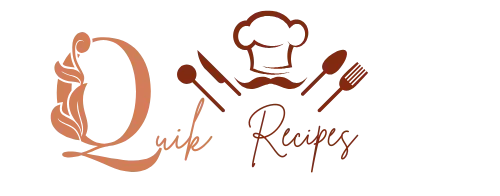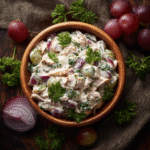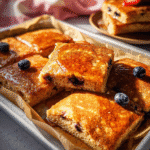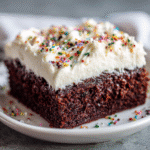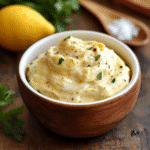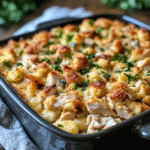Cornbread has deep roots in the culinary history of Native American tribes, especially among the Navajo people. Unlike the sugary, fluffy Southern-style versions found across modern American kitchens, Navajo cornbread holds cultural significance and historical depth. In this article, we’ll explore the history, ingredients, cooking techniques, and modern adaptations of this beloved bread. From traditional recipes to modern twists, and even vegan options, you’ll find everything you need to honor and enjoy this Indigenous staple.
Navajo cornbread, like many Indigenous recipes, dates back centuries. Corn, or maize, was a sacred crop in Native American culture—grown not just for sustenance, but as a spiritual gift. For the Navajo people, corn represented life, ceremony, and survival.
Cornbread was more than just food; it was often used in religious rituals, given as offerings, and prepared during community gatherings. Baked in the coals or on flat stones, this bread helped sustain families through tough winters and long migrations.
Unlike mainstream versions, Navajo cornbread was denser and more rustic. It wasn’t meant to be sweet or fluffy—it was a hearty companion to stews, beans, and meats.
Corn became central to the Navajo diet after their ancestors adopted farming practices around 200 A.D. While wild plants and game remained part of their diet, the cultivation of corn allowed the community to thrive in arid conditions. Yellow, blue, white, and red corn varieties were grown, each with unique uses and ceremonial importance.
Blue corn, in particular, was highly prized. It was ground into meal using stone tools and mixed with water or animal fat to form the base of cornbread and dumplings. Today, blue cornmeal is still used in traditional dishes and is believed to have spiritual healing properties.
This dietary legacy continues in modern Navajo kitchens, where families pass down recipes for stone-ground cornbread that reflect both heritage and adaptation.
Don’t miss our One-Pot Sassy Honey Garlic Chicken for a sweet-savory dish that pairs surprisingly well with rustic breads like Navajo cornbread.
Understanding the Ingredients
At the heart of Navajo cornbread lies a simple yet powerful ingredient—cornmeal. Traditionally, Navajo people used stone-ground blue or yellow cornmeal, often ground by hand using metates (grinding stones). This unrefined texture provided a hearty, coarse feel that held up well to stews and long cooking times.
Cornmeal wasn’t merely chosen for its practicality—it held deep spiritual significance. Blue cornmeal, for instance, is still used in religious rituals and symbolizes harmony and spirituality in many Indigenous communities. It is higher in protein and antioxidants than the more common yellow cornmeal used in commercial cornbread recipes.
In addition to cornmeal, traditional versions sometimes included pinon nuts, ash, or wild herbs to boost flavor and nutrition. These ingredients weren’t just culinary choices—they were a reflection of the land and the resources it provided.
Print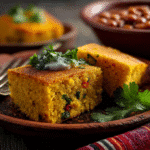
- Total Time: 40 minutes
- Yield: 8 slices
Description
Navajo Cornbread Recipe is a moist, golden twist on a traditional Native American classic. Made with cream-style corn, buttermilk, and cornmeal, it’s tender, rustic, and perfect with stews, beans, or a drizzle of honey. Ready in just 40 minutes!
Ingredients
- 1 cup cream-style corn
- 1 cup cornmeal
- 1 cup buttermilk
- 1/4 cup sugar
- 1/4 cup vegetable oil
- 2 large eggs
- 1 teaspoon baking powder
- 1/2 teaspoon baking soda
- 1/2 teaspoon salt
Instructions
- Preheat Oven: Set your oven to 375°F (190°C) and grease a baking dish or cast iron skillet.
- Combine Dry Ingredients: In a large bowl, whisk together the cornmeal, baking powder, baking soda, and salt.
- Mix Wet Ingredients: In a separate bowl, stir together the cream-style corn, buttermilk, sugar, oil, and eggs until fully blended.
- Blend: Fold the wet mixture into the dry ingredients. Stir until just combined—do not overmix.
- Bake: Pour the batter into the greased dish and smooth the top. Bake for 25–30 minutes or until the top is golden and a toothpick inserted comes out clean.
- Cool & Serve: Let the cornbread cool slightly, then slice and serve warm. Perfect on its own or with savory sides!
Notes
For a crispier crust, preheat your baking dish or cast iron skillet before pouring in the batter. Add chopped herbs or shredded cheese for a modern twist. This recipe pairs beautifully with beans, stews, or chili.
- Prep Time: 10 minutes
- Cook Time: 30 minutes
- Category: Bread
- Method: Baked
- Cuisine: Native American
Comparing ancient ingredients with modern substitutions
Modern home cooks may not always have access to traditional blue cornmeal or wild-foraged herbs, but substitutions can be made without losing the essence of Navajo cornbread.
Here’s a table comparing traditional vs. modern ingredient options:
| Traditional Ingredient | Modern Substitution | Notes |
|---|---|---|
| Blue cornmeal | Yellow or white stone-ground cornmeal | Try to use organic, non-GMO varieties |
| Rendered animal fat | Unsalted butter or vegetable oil | Butter adds richness; oil keeps it moist |
| Wild herbs (e.g. juniper) | Dried thyme or oregano | Adds earthy tones |
| Pinon nuts | Chopped walnuts or sunflower seeds | Provides similar texture and nuttiness |
If you want to come close to the traditional recipe, aim for minimally processed ingredients. Stone-ground meal and natural fats give the bread a denser, more authentic feel.
Modern bakers can also mix in whole wheat flour or even masa harina for an extra touch of corn authenticity, though purists might prefer to keep the recipe as corn-focused as possible.
Using local or organic ingredients not only enhances the flavor but respects the spirit of self-sufficiency practiced by Native communities.
Navajo cornbread carries distinct characteristics that set it apart from more mainstream Southern and Northern versions. While many Americans are familiar with the sweet, fluffy textures of Southern cornbread or the drier, unsweetened style of Northern cornbread, the Navajo version stands as a category of its own.
Here’s a quick comparison table:
| Feature | Navajo Cornbread | Southern Cornbread | Northern Cornbread |
|---|---|---|---|
| Texture | Dense, coarse, hearty | Moist, tender, cake-like | Dry, crumbly |
| Sweetness Level | Minimal to none | Often sweetened with sugar or honey | Typically not sweetened |
| Fat Used | Traditional animal fat or oil | Bacon grease or butter | Butter or neutral oil |
| Cornmeal Type | Stone-ground blue/yellow cornmeal | Fine yellow cornmeal | Medium to coarse yellow cornmeal |
| Baking Method | Open flame, skillet, or hot stone | Oven-baked in cast iron | Oven-baked or griddled |
| Add-ins | Rare; occasionally nuts or herbs | Often includes eggs, buttermilk | Fewer extras, simpler |
One key difference lies in the simplicity of Navajo cornbread. It’s a utilitarian bread—designed to nourish, not to impress. There’s little fluff, literally and figuratively. Its dense texture allows it to hold up well when dipped into hearty stews or served alongside beans and meat.
Textural differences and regional baking styles
The textural contrast between Navajo cornbread and other regional varieties is immediately noticeable. Where Southern cornbread is buttery and moist—almost dessert-like in some recipes—Navajo bread leans rugged and rustic. It crumbles differently, chews heartier, and sits heavier in the belly, which made it ideal for sustenance during long workdays or travels.
Traditional baking methods also play a big role. Navajo families once baked cornbread on heated flat rocks or in hot coals wrapped in leaves or cloth. The result? A crispy crust with a smoky undertone, something modern ovens just can’t replicate.
That said, contemporary cooks can recreate this effect using a pre-heated cast iron skillet or even baking on a grill.
In a cultural context, cornbread isn’t just about the ingredients—it’s about the way it’s made and why it’s made. And that makes Navajo cornbread truly unique.
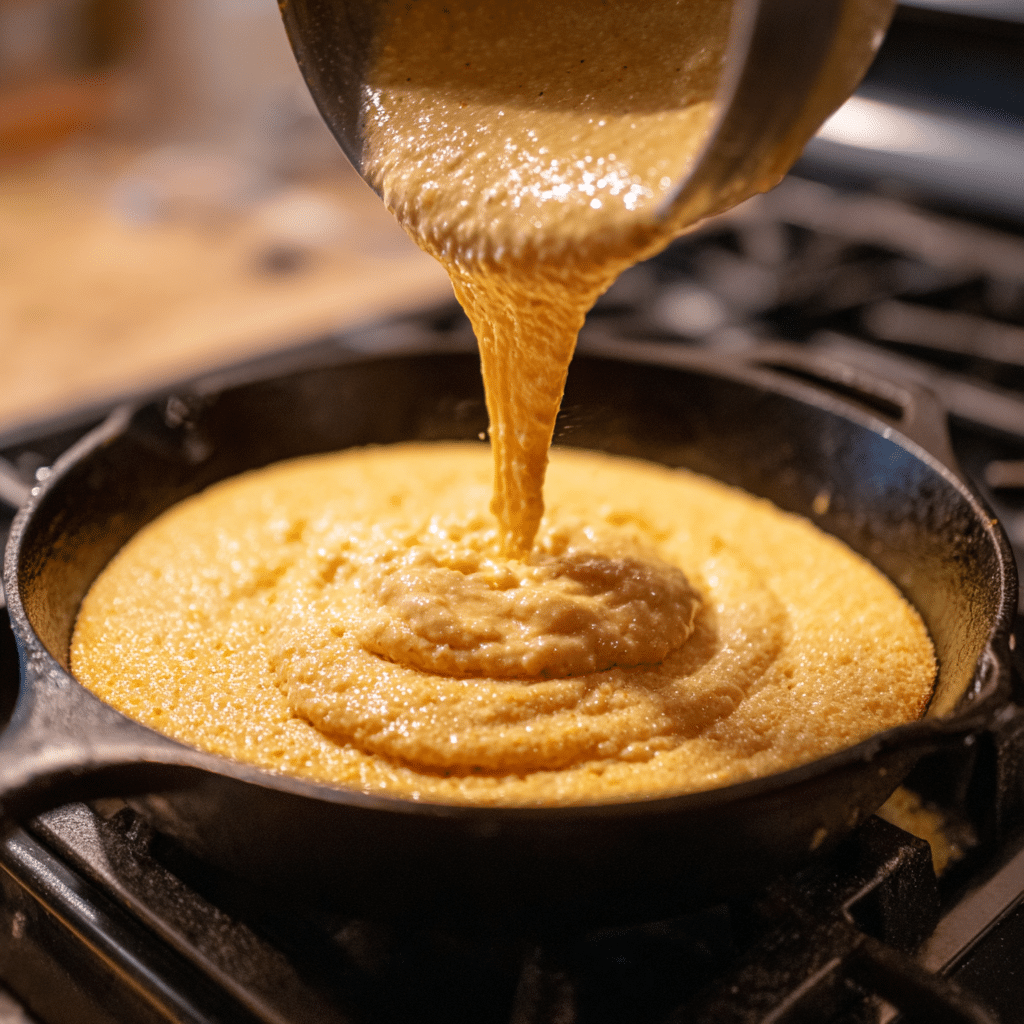
This simple yet nourishing recipe honors the original method while allowing for easy replication in a modern home kitchen. Traditionally made with minimal ingredients, Navajo cornbread is about connection to the land and resourcefulness.
Here’s a classic recipe adapted for today’s home cooks:
Ingredients:
- 1 cup cream-style corn
- 1 cup blue or yellow stone-ground cornmeal
- 1 cup buttermilk
- ¼ cup sugar
- ¼ cup vegetable oil
- 2 large eggs
- 1 teaspoon baking powder
- ½ teaspoon baking soda
- ½ teaspoon salt
Instructions:
- Preheat your oven to 425°F (or prepare a cast iron skillet over medium-high heat if cooking on a stovetop or grill).
- In one bowl, mix the dry essentials: cornmeal, a lift from baking powder and soda, and a good pinch of salt.
- In a second bowl, blend the wet team: rich cream-style corn, tangy buttermilk, a splash of oil, a bit of sugar, and a couple of eggs. Whisk until silky and smooth.
- Bring the two together—pour wet into dry and fold gently until just combined. No need to overdo it; a light hand makes a tender bite.
- Transfer the batter into your hot pan, smoothing the surface with the back of a spoon or spatula.
- Bake or cook for 25–30 minutes, or until the top is golden brown and the edges are crisp. If grilling or stovetop cooking, flip halfway for even crisping.
- Allow to cool slightly, then slice and serve.
This rendition results in a sturdy, rustic loaf with a gratifying texture and delicate earthy flavor. It’s ideally served warm and complements bean stews, chili, or roasted vegetables beautifully.
Tips for sourcing traditional ingredients in the U.S.
Ready to give your recipe an irresistible upgrade? Here’s how to find authentic, traditional ingredients:
- Blue cornmeal: Available online through Native-owned businesses or specialty health food stores.
- Pinon nuts: Typically sourced from Native markets across the Southwest or purchased via online tribal cooperatives specializing in Indigenous goods.
- Rendered fat (tallow/lard): Check local butchers or substitute with unrefined coconut oil for a neutral fat.
- Cast iron cookware: A must-have for that authentic crust. Preheat it before pouring in the batter.
If finding ingredients is a challenge, focus on using stone-ground cornmeal and a cast iron skillet—this duo alone brings rich flavor and traditional texture to your cornbread.
Cooking Techniques and Tools
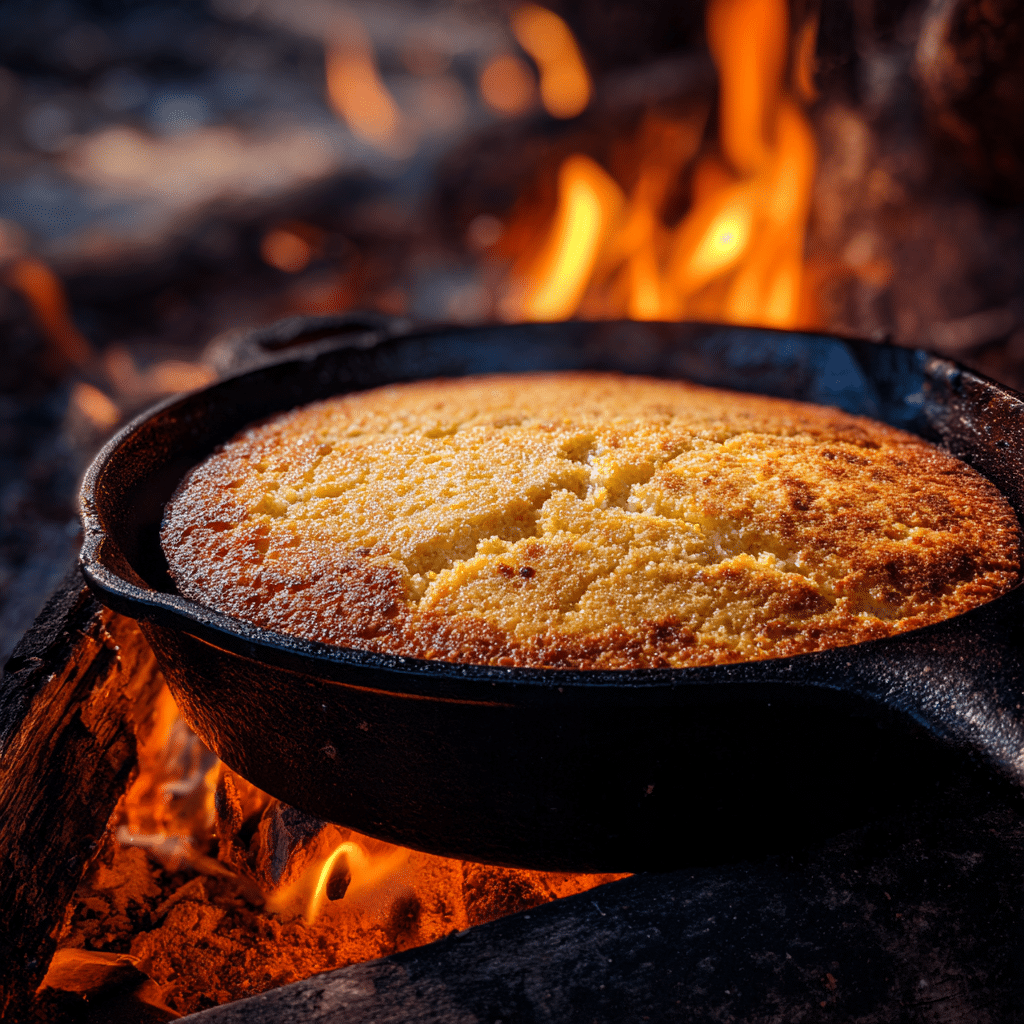
Historically, Navajo cornbread wasn’t baked in an oven—it was cooked over open flame, nestled in hot ashes, or on heated flat stones. These primitive methods gave the bread a unique texture and a touch of smoky flavor, making each bite a connection to tradition.
Open flame cooking involves shaping the dough into patties or discs, placing them on a flat stone heated in a fire, or wrapping them in leaves and cooking them directly in embers. This technique produces a crusty exterior with a chewy, rich interior—ideal for dipping into stews or eating on the go.
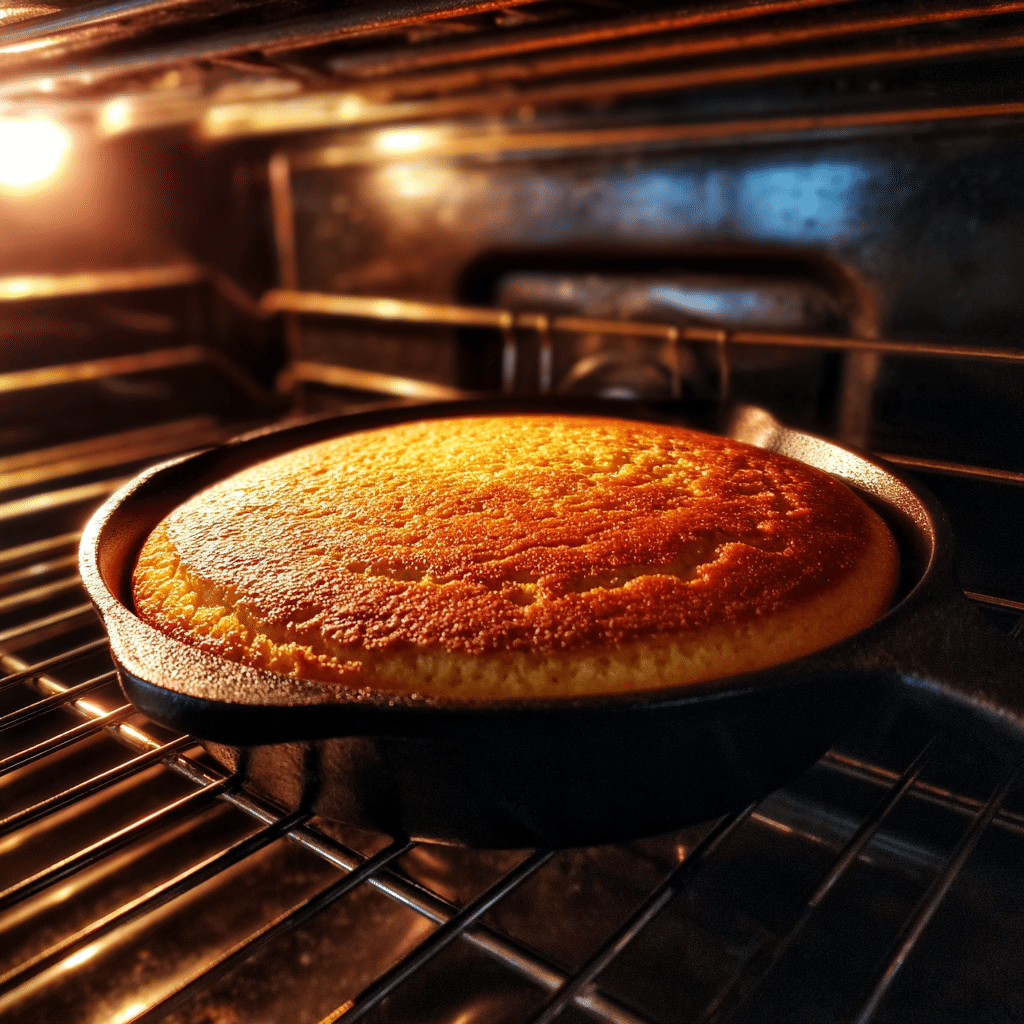
In contrast, modern oven baking offers consistency and convenience. Preheating a cast iron skillet replicates the heat of stone baking, creating that beloved crispy bottom and edges. The trick is high heat and minimal oil.
Here’s a quick comparison:
| Method | Flavor Profile | Tools Needed | Time | Skill Level |
|---|---|---|---|---|
| Open flame | Smoky, crisp edges | Flat stone or wrapped foil | 20–30 mins | Advanced |
| Cast iron in oven | Crisp bottom, soft top | Oven, cast iron skillet | 25–30 mins | Moderate |
| Grill or stovetop | Slightly smoky, crisp | Grill pan or skillet | 15–20 mins | Easy |
In today’s kitchen, cast iron skillets reign supreme for capturing the essence of traditional Navajo cooking. Their ability to hold and spread heat evenly creates that signature golden crust and hearty texture essential to authentic cornbread.
Baking stones offer another fantastic alternative. By preheating the stone in your oven and placing the dough directly on it, you’re echoing the ancestral method of baking over hot rocks—enhancing both flavor and texture.
Quick Tip:
Always heat your skillet or baking stone before adding the dough—this ensures a crisp, well-developed crust from the first contact.
Flavor Variations and Modern Adaptations
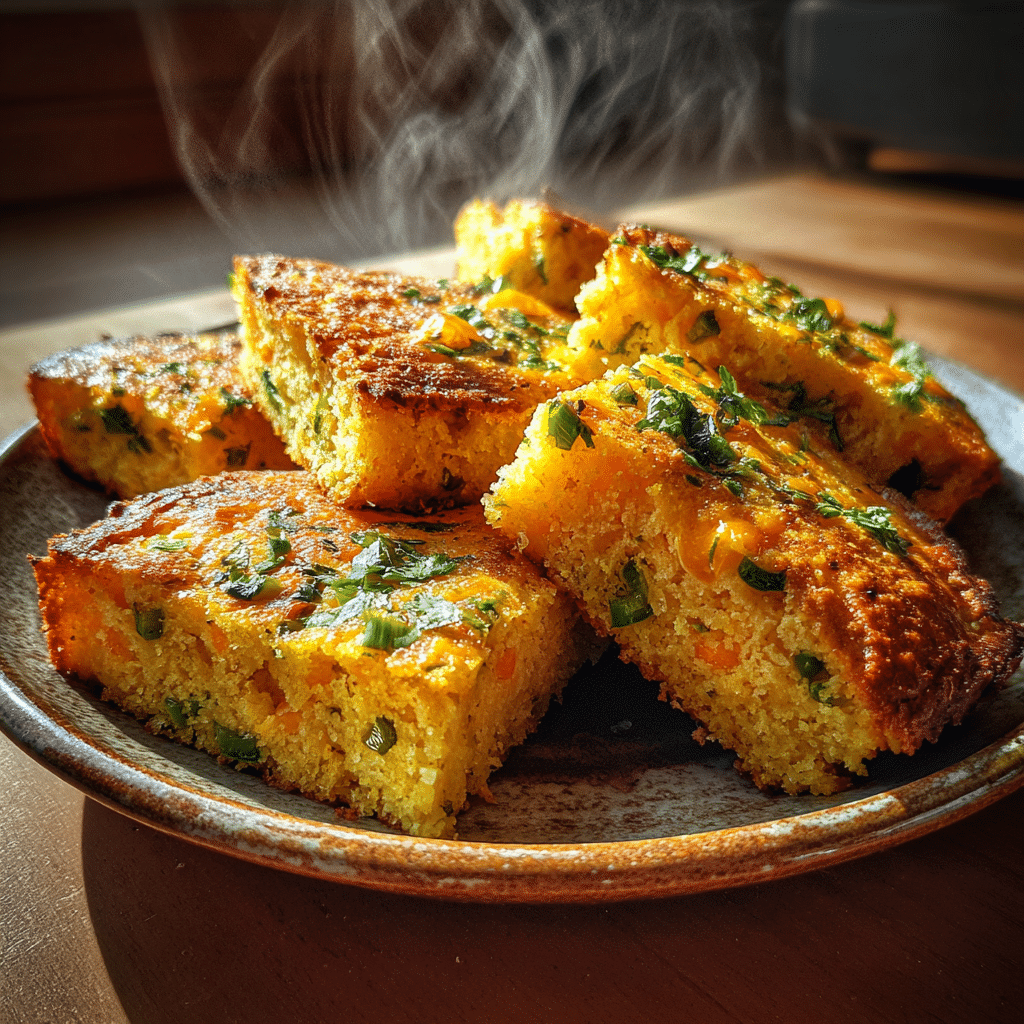
Adding herbs, peppers, or cheese to enhance flavor
While traditional Navajo cornbread is known for its simplicity, there’s room for flavorful enhancements that still respect its cultural roots. Whether you’re seeking a more savory profile or a little heat, modern adaptations of Navajo cornbread can be both delicious and respectful.
Here are some tasty additions that complement the natural grainy depth of Navajo cornbread:
| Ingredient | Effect | Notes |
|---|---|---|
| Chopped green chilies | Adds mild heat and earthy aroma | Use roasted Hatch chiles if possible |
| Crumbled feta or cotija | Boosts saltiness and richness | Pairs well with cornmeal’s nuttiness |
| Fresh herbs (sage, thyme) | Earthy depth | Echoes wild herbs used traditionally |
| Diced onions or shallots | Sweet-savory contrast | Caramelize lightly before mixing in |
| Shredded cheddar | Rich and melty | A hit with kids and cheese lovers |
For a more Southwestern flair, try mixing in cumin, smoked paprika, or even roasted corn kernels. These ingredients bring boldness without overpowering the rustic charm of this Native American classic.
Adding mix-ins can turn a humble side dish into a centerpiece—ideal for potlucks, holiday meals, or hearty breakfasts.
If you’re looking to make Navajo cornbread vegan or gluten-free, it’s easier than you might think. The traditional recipe already leans naturally dairy-free and contains no wheat flour. Here’s how to make it more inclusive:
Vegan Adaptation:
- Replace animal fat with avocado oil, olive oil, or unrefined coconut oil.
- Use plant-based milk (like unsweetened almond milk) if adding any moisture beyond water.
- Consider adding flaxseed meal for a slight binding effect and extra nutrition.
Gluten-Free Tips:
- Most authentic Navajo cornbread uses 100% cornmeal, which is naturally gluten-free.
- Be sure your cornmeal is certified gluten-free, as cross-contamination can happen during processing.
- You can mix in almond flour or gluten-free masa harina for added richness and texture.
These alternatives don’t just make the recipe more accessible—they also help modern eaters enjoy a version of this Indigenous bread that’s aligned with today’s dietary preferences.
Preserving the Heritage
How Indigenous chefs are keeping traditional bread recipes alive
In recent years, there’s been a powerful resurgence of Native American culinary traditions, led by Indigenous chefs and food activists determined to preserve ancestral knowledge. At the heart of this movement is the revival of dishes like Navajo cornbread, not just as recipes—but as acts of cultural resilience.
Chefs like Sean Sherman (The Sioux Chef) and Freddie Bitsoie are reintroducing Indigenous foods into modern conversations. Their goal isn’t just to bring back forgotten ingredients, but to reconnect people—especially Native youth—with their culinary identity.
By teaching cooking techniques, hosting workshops, and opening Indigenous-owned restaurants, these leaders are helping traditional recipes like Navajo cornbread survive in today’s world. Their work proves that food can be both a history lesson and a future plan.
Through these efforts, younger generations are learning to grind their own cornmeal, understand the significance of blue corn, and embrace their heritage through everyday meals.
The importance of food sovereignty and cultural education
Food sovereignty is the right of people to access healthy, culturally appropriate food produced through ecologically sound and sustainable methods. For Native communities, reclaiming traditional recipes like Navajo cornbread is an act of both self-determination and healing.
Centuries of colonization and forced assimilation disrupted Indigenous food systems. Processed foods replaced heritage grains. Fast food supplanted homegrown stews and breads. But today, many tribes are returning to their roots by growing native corn, raising traditional livestock, and restoring ancestral land stewardship.
Navajo cornbread, with its simple ingredients and historical roots, is a symbol of this revival. It teaches respect for the land, encourages intergenerational learning, and promotes sustainable agriculture.
Schools and cultural centers are now integrating Native food education into their curriculum—using cornbread to open conversations about colonization, survival, and pride.
When you make Navajo cornbread in your own kitchen, you’re not just baking—you’re participating in a powerful tradition of storytelling and preservation.
FAQs
What did Native Americans call cornbread?
Native Americans didn’t use the word “cornbread” as we know it today, but various tribes had their own terms and preparations for corn-based breads. Among the Navajo, corn-based dishes were referred to using words from the Diné Bizaad language. Though there isn’t a direct English translation for “cornbread,” preparations like “naan” (bread) or “bake” over hot stones were commonly described in context. More generally, Indigenous tribes such as the Cherokee and Hopi prepared variations like corn cakes, flatbreads, or loaves baked in ash—early forms of what we now know as cornbread. These breads played key roles in both everyday life and ceremonial traditions, with names differing across regions and dialects.
How does Southern cornbread differ from Northern cornbread?
Southern cornbread tends to be moist and slightly sweet, often made with sugar or honey, fine cornmeal, eggs, and buttermilk. It’s traditionally baked in a cast iron skillet, creating a crisp, golden crust.
Northern cornbread, on the other hand, is more dry and crumbly, with little to no added sugar. It leans toward a heartier, grain-forward texture and is usually paired with savory dishes.
Navajo cornbread stands apart from both styles. It’s earthier, more rugged, and typically unsweetened, relying on stone-ground cornmeal and simple ingredients to reflect the sustenance-focused traditions of Indigenous cuisine.
What is the secret to making good cornbread?
The secret lies in using quality cornmeal, preheating your skillet or baking stone, and not overmixing the batter. Whether you’re making Southern, Northern, or Navajo cornbread, these tips apply:
–Stone-ground cornmeal gives a better texture and taste than processed versions.
–Let the batter rest for 5–10 minutes to hydrate fully before baking.
–Use high heat and cast iron for a crispy crust—especially important in Navajo cornbread.
Additionally, don’t overload the batter with wet ingredients or over-stir, which can lead to dense, gummy bread.
What is the name of the Indian cornbread?
There isn’t a single name for “Indian cornbread” because every tribe had its own version and language. Some popular types include:
–Navajo cornbread – simple, coarse, often baked or griddled.
–Piki bread (Hopi) – paper-thin blue corn bread.
–Frybread (pan-Indian) – while not traditional pre-colonial, it’s widely associated with Native cuisine.
–Tamales or corn cakes – prepared by Southwestern tribes using cornmeal or masa.
Each of these is a distinct expression of Indigenous culinary tradition. Navajo cornbread, in particular, is among the most accessible and widely adapted today.
Conclusion
More than just a recipe, Navajo cornbread is a powerful reminder of culinary heritage, survival, and simplicity. With roots stretching back centuries, this Indigenous bread continues to nourish families today—both physically and culturally.
Whether you’re baking it over fire like the Navajo ancestors or using a modern oven in your kitchen, this cornbread brings depth, texture, and meaning to every meal. And by exploring its many variations—vegan, cheesy, spicy, or gluten-free—you’re keeping a timeless tradition alive in your own way.
So the next time you crave something hearty, historic, and healthy, consider turning to this humble Native American staple. In every bite of Navajo cornbread, there’s a story worth remembering—and sharing.
Don’t miss our recipes on Facebook.
